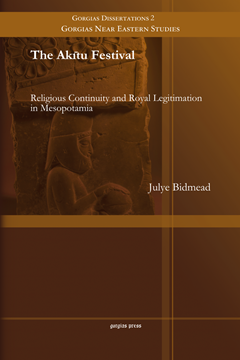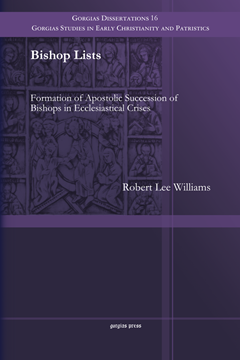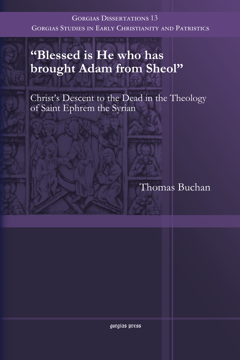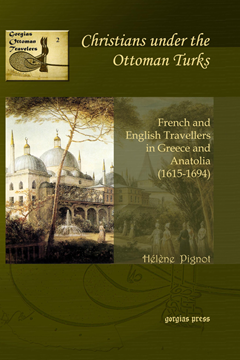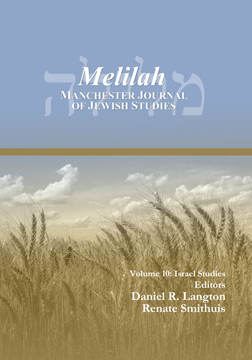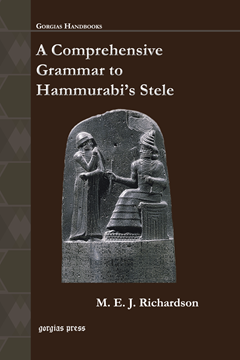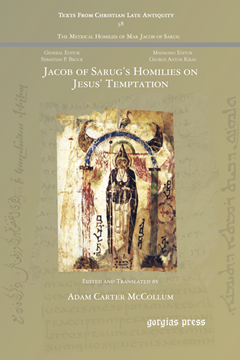Jacob of Sarug's Homily on the Creation of Adam and the Resurrection of the Dead
Translation and Introduction by Edward G Mathews Jr
Series: Texts from Christian Late Antiquity 37
ISBN: 978-1-4632-0264-4
Mêmrâ 72 is a meditation on the fall of Adam and its consequences, subjecting all creation to corruption. God’s mercy, however, will restore everything to a spiritual, incorruptible state that will exist eternally in the unending light of Christ.
$34.00 (USD) $20.40 (USD)
The Akītu Festival (paperback)
Religious Continuity and Royal Legitimation in Mesopotamia
Series: Gorgias Near Eastern Studies 2
ISBN: 978-1-4632-0265-1
The akītu festival is one of the oldest recorded religious festivals in the world, celebrated for several millennia throughout ancient Mesopotamia. Yet, the akītu was more than just a religious ceremony; it acted as a political device to ensure the supremacy of the king, the national god, and his capital city. Using tools of social anthropology and ritual analysis, this book presents a detailed reconstruction of the festival events and its attendant rituals to demonstrate how the festival became a propagandistic tool wielded by the monarchy and ruling classes. The akītu festival demonstrates the effectiveness of religion as a political tool.
$85.00 (USD) $51.00 (USD)
Bishop Lists
Formation of Apostolic Succession of Bishops in Ecclesiastical Crises
ISBN: 978-1-4632-0266-8
Early lists of bishops, identified by Walter Bauer as "literary propaganda," mark critical points in the development of the doctrine of the apostolic succession of bishops. This study delves into the political struggles surrounding the lists and the doctrine they served to define. Ecclesiastical politics in each case reflects the threat to the bishop's authority and clarifies the meaning of apostolic succession in the Church's development. This social history approach, examining the function of the literature within its historical circumstances, reveals how theology developed from politics. The development is as gripping politically as it is illuminating theologically.
$98.00 (USD) $58.80 (USD)
"Blessed is He who has brought Adam from Sheol" (paperback)
Christ's Descent to the Dead in the Theology of Saint Ephrem the Syrian
Managing Editor Joseph Knanishu
ISBN: 978-1-4632-0267-5
Buchan’s work is an examination of the theological use of the doctrine of Christ's descent to the dead in the works of Saint Ephrem the Syrian (ca. 306-373 C.E.). Ephrem's conception of Christ's descent to Sheol provides us with an important and distinctive vision of the significance of this salvific event. Ephrem's use of Semitic and non-Western poetic forms and structures as a mode of theological discourse, coupled with his preference for imagery and symbolism rather than definition, resulted in a variety of vivid depictions of Christ's descent to Sheol. The doctrine is shown to be an integral and multifaceted component of Ephrem's theology.
$128.00 (USD) $76.80 (USD)
Christians under the Ottoman Turks
French and English Travellers in Greece and Anatolia (1615-1694)
Series: Gorgias Ottoman Travelers 2
ISBN: 978-1-4632-0591-1
In the 17th century Britons left their country in vast numbers - explorers, diplomats, ecclesiastics, merchants, or simply “tourists.” Only the most intrepid ventured into the faraway lands of the Ottoman Empire. Their travel narratives, best-sellers in their day, provide an entertaining but also valuable testimony on the everyday life of Orthodox Christians and their coexistence with the Turks. Greek Christians, though living under the Ottoman yoke, enjoyed greater religious freedom than many of their brothers in Christian Europe. The travelers’ intellectual curiosity about Greece opened a window on the Orthodox Church, and paved the way for future dialogue.
$106.00 (USD) $63.60 (USD)
"YHWH Fights for Them!"
The Divine Warrior in the Exodus Narrative
Series: Gorgias Biblical Studies 58
ISBN: 978-1-4632-0271-2
The divine warrior is an important motif in the Old Testament, leading many to study profitably the motif in its most prominent manifestations in poetic texts. This study builds on that foundation by examining the divine warrior in detail in the exodus narrative to construct a broader picture of the motif in the Old Testament.
$164.00 (USD) $98.40 (USD)
Hugoye - Journal of Syriac Studies (volume 16)
2013
General Editor George Anton Kiraz
Series: Hugoye: Journal of Syriac Studies 16
ISBN: 978-1-4632-0280-4
Widely regarded as a premier journal dedicated to the study of Syriac, Hugoye: Journal of Syriac Studies was established in 1998 as a venue devoted exclusively to the discipline. An organ of Beth Mardutho, the Syriac Institute, the journal appears semi-annually and will be printed in annual editions. A peer-reviewed journal, Hugoye is a respected academic source for up-to-date information about the state of Syriac studies and for discovering what is going on in the field. Contributors include some of the most respected names in the world of Syriac today.
$75.00 (USD) $45.00 (USD)
Manchester Journal of Jewish Studies (2013)
Editors Daniel R. Langton & Renate Smithuis
ISBN: 978-1-4632-0282-8
Melilah is an interdisciplinary electronic journal concerned with Jewish law, history, literature, religion, culture and thought in the ancient, medieval and modern eras.
$52.00 (USD) $31.20 (USD)
A Comprehensive Grammar to Hammurabi’s Stele
Series: Gorgias Handbooks
ISBN: 978-1-4632-0284-2
This complete grammar of Code of Hammurabi is formally arranged and can be the basis for learning the rest of Akkadian grammar. Students of Biblical Hebrew or Arabic will find it a most convenient introduction to this sister language. The cuneiform text has been set out in columns opposite a phonetic transcription, thus enabling the comprehensive set of citations illustrating various points of Akkadian grammar to be easily checked within their wider linguistic context. This book, when used in conjunction with the author’s previous book “Hammurabi’s Laws”, makes it possible for a student to learn to read and understand the whole text of Hammurabi’s Stele.
$82.00 (USD) $49.20 (USD)
Jacob of Sarug’s Homilies on Jesus' Temptation
Edited and Translated by Adam Carter McCollum
Series: Texts from Christian Late Antiquity 38
ISBN: 978-1-4632-0285-9
This volume presents, with introduction and annotations, two metrical homilies (Bedjan nos. 82, 126) of Jacob of Sarug in which he reflects on the Temptation of Jesus as combat between Satan and Jesus, the latter emerging as the humble victor.
$47.00 (USD) $28.20 (USD)

